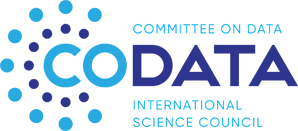Events
12-15 July 2016: Young scientists summer school “System Analysis and Seismic Hazard Assessment”
Reducing the impact of natural and man-caused catastrophic events is a complex scientific and technical problem, which is of great social and economic importance. Its urgency is continuously increasing due to rising population density, anthropogenic impact on natural environment, development of environmentally hazardous industries (nuclear, chemical, military industry, etc.), and expansion of mining production, oil and gas.
According to UN data seismic catastrophes constitute 51 % from the total number of natural cataclysms. Earthquakes are extreme evens occurred in a complex system – the Earth lithosphere. They are controlled by dynamics of the lithospheric plates, accumulation of tectonic stress and its release. The largest earthquakes occur rarely but lead to huge economic, financial, and human losses.
Modern methods of seismic hazard assessment though being rather developed are not always able to characterize in detail a particular region at real threat as a result of strong earthquake. At the same time the estimates obtained by the classical methods of seismic zoning were exceeded in each of the 88 earthquakes with a magnitude greater than or equal to 7.5 that struck around the world from 1990 to 2009 including the 12 deadliest earthquakes that shook between 2000 and 2011.
Thus enhancement of the existing methods and development of new ones for adequately assessing and predicting seismic hazard and risks are fundamental scientific problems addressed to the problem of reducing losses associated with natural hazards. Taking into account multiple-factor processes causing earthquakes the decision of these problems can be achieved only on the basis of applying the complex of methods and the further system analysis of the results obtained.
The subject area of the Workshop will be devoted to the new methods developed recently for seismic hazard assessment and integration on the basis of the system analysis of results obtained by these methods. Examples of seismic hazard assessment for specific regions will be also considered.
The lectures at the Workshop will cover the following specific topics:
- application of the artificial intelligence techniques for determination of areas prone to large earthquake;
- morphostructural zoning and its usage for determination of areas prone to large earthquake;
- seismic hazard assessment based on the Unified Scaling Law for Earthquakes (USLE) that generalizes the Gutenberg-Richter law;
- system algorithmic approach to seismic hazard assessment;
- modeling of blocks-and-faults system dynamics and seismicity.
Along with the lectures practical exercises will be arranged to give to workshop participants skills of application of seismic hazard assessment methods.
18-21 July 2016: International conference “Data Intensive System Analysis in Geohazard Studies”
The conference is the fifth in a series of meetings previously held in Suzdal (2007), Pereslavl (2009), Uglich (2011) and Kaluga (2013) and devoted to geophysical observations, data mining applications and geoinformatics. The upcoming conference will focus on implementation of a system approach to the data analysis in order to detect the extreme conditions. Hazardous natural phenomena such as storms, earthquakes, volcanic eruptions, as well as some man-made hazards can be detected by different techniques routinely applied for monitoring the geophysical parameters.
In the last decades, organizations have made considerable efforts to design and establish new observational systems from which thematic information on geophysical parameters can be obtained in real time and retrospectively. As the size of remote sensing observations grows, the volume of the data has become overwhelming and often need implementation of system analysis embracing a holistic Earth science approach in order to get the comprehensive information on the phenomena of different degrees of hazard. The importance of sophisticated data analysis to detect the multi-scale extremes is increasing.
Symposium brings together research scientists, observers, computer experts, practitioners, technical end-users and decision makers concerned with monitoring of the Earth’s environment, detection of hazards, data analysis and modeling, vulnerability and risk assessment. We intend to discuss the topics related to observations, detection and modeling of geophysical natural and anthropogenic phenomena; development, implementation and maintenance of methods and instruments for monitoring, evolution of natural systems towards extreme conditions, assessment of global- and local-scale hazardous natural and man-made phenomena, challenges in data processing and analysis using, e.g., pattern recognition, statistical and other methods relevant to large data arrays, applications of geo-databases and geo-information systems for natural hazard assessments. The symposium combines formal talks, poster sessions and round-table discussions.
Key Sessions
- Data flow, open data, and big data for geophysical monitoring and system analysis
- Observations, data processing, recognition of the evolution of geophysical systems towards extreme conditions
- Space weather and hazards in the Earth’s electro-magnetic environment
- Geophysical extremes in the Arctic
